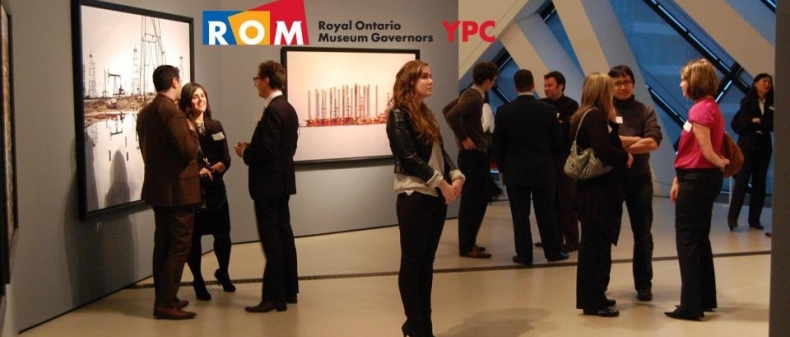
Photo courtesy of Young Patrons Circle (YPC)
What comes to mind when you think of a self-described philanthropist? He or she’s a few years older than you, probably. Someone who’s established in their career or maybe someone who’s reached retirement. This philanthropist has money in the bank, enough put away to justify giving out lump sums to a cause they’ve nutured an interest in over the course of his or her life. The philanthropist is not a headphone-wearing, fresh-out-of-college unpaid intern, nor even a young professional who’s just starting to get it together. Why? Because traditionally, and seemingly sensibly, the concept of philanthropy is reserved for someone who has the finances to take care of the necessities and has moved on to afford luxuries before they can even think about moving on to help someone (or someplace) else. As it stands, “philanthropist” isn’t a hat I’ll be putting on for another thirty years – because it’s not an identity that feels realistic for the modern young person.
According to a few local nonprofits in Toronto, here lies the problem. The assumption that philanthropy is something for ‘when you’re older’ is both unnecessary and out of touch. Young people today are looking for creative ways to find causes they’re passionate about, looking for ways to get involved, and aren’t finding places to do so. The nonprofit sector often ignores TIME magazine’s decidedly “Me Me Me” millennials when considering possible donors – and with that kind of label, why wouldn’t they? But a few Toronto nonprofits have come forward with plans to target the Y generation, finding that they hold potential to be the most generous donors yet.
Us young people, see, we love to have our voices heard. (TIME, you might agree. That narcissistic social media you hate so much might just stand as proof). We like social media, we like social networking, and we stand by what we believe – and according to these new nonprofits, that type of engagement translates into potential for being great campaigners. Take the success of crowdfunding platforms like Kicksarter and Indiegogo among millenials. These resources appeal to people who might feel financially powerless, but have a strong desire to move forward an idea. After finding a campaign and donating, even if we’re only spending a dollar, a donor will monitor its growth and build a relationship with that cause. It’s a form of social engagement, and it connects the young person to their charitable work. If young people haven’t been groomed to consider ‘philanthropist’ as a tangible title, maybe the whole concept of philanthropy should be re-configured to consider a new target that values relationship-building and social interaction. Or, the millenial philanthropist.
Back track. Before I had heard anything about this so-called “millenial philanthropist,” or about these nonprofit groups now looking to engage them, I was invited to a sneak preview of the Mesopotamia exhibit at the Royal Ontario Museum. The event was being thrown by the museum’s Young Patrons Circle (YPC). The name should have been a giveaway. I was sent to check out the program last-minute, and arrived knowing nothing other than that the membership group was made up of people who “make an annual philanthropic gift to the Museum and enjoy exclusive access to ROM exhibitions, galleries, curators, vaults, and private collections.” So read the website off my phone on the walk over. Upon arrival I was greeted with a warm welcome and quickly found out that the night was typical of the YPC’s cultural, informative, and behind-the-scenes occasions for attendees, who are often invited to bring up to three friends. The age cut-off of the program is 45, and the typical member is a young professional.
The strict age group surprised me. These museum philanthropists making large contributions are not, in fact, retirement-age donors looking to give back to the insitute. I didn’t quite understand why the ROM would isolate potential donors from the club based on age, nor did I see what would motivate this large group to make significantly larger annual philanthropic donations when they could go for the regular-style membership. Despite these concerns, a more serious one was how not to seem obvious when lingering near the cheese table. I was doing the dance when a YPC member approached me.
“So, you’re here to meet men too, right?” she asked. I was speechless, partially due to the fact that I had stuffed my mouth full of grapes. She continued to ask me where I was from, because she didn’t recognize me from past events. I found out that the member was a busy academic who had been encouraged to join, having heard it was a great way to meet guys in the city. With limited ways of doing so when you’re past student-age, this was an ideal group to get in with. As we spent some time talking, things started to fall into place: while these young members were all financially stable enough to make charitable donations, they had chosen this group because of the opportunities to mingle that these frequent events promise. A few conversations with other members later, the story was obvious: a lot of the people there were looking to meet singles in their age (and income) bracket. At YPC, they got to do cool things together, like go to behind-the-scenes exhibits and museum-inspired formal events like “Ancient Prom.” After talking to one of the organizers my impression was confirmed. She told me that a lot of the members join because it’s a way to get out there in the city to make friends between the ages of 19 and 45, and left me to go party downstairs at Friday Night Live. “Seriously, where else am I going to go dancing?!”
She was right. There AREN’T a lot of cool places to dance for people who aren’t under the age of twenty five, and that was just the tip of the iceberg of what YPC was working out to their advantage. In exchange for their donations, the YPC offers members a ROM-themed social life. The members are happy because they’re meeting new people in a city where that’s sometimes hard to do, plus they’re extending their interest in the arts by getting to go to the museum for special events on a regular basis. In return, the YPC finds group of donors who are beginning a longer relationship with the ROM. The YPC’s platform to use social engagement is incredibly effective at attracting new people. What stood out in YPC’s lineup of events is their new one YPC speaks: an occasion that invites members to get up on stage themselves and speak about subjects they’re experts on. There it is, the blessing of the “Me Me Me” generation’s most notable quality – a kick of narcissism that translates into community benefit, as young people look for ways to share and socially engage.
The Art Gallery of Ontario’s AGO Next fosters a similar environment. They already launched their membership program for individuals “under 40 who want to immerse themselves in art.” Angela Grabham, Manager of Individual Giving at the Art Gallery, says that “the mix of art and socializing and doing something new” is what keeps things fresh. Their most popular past events include all those ingredients: graffiti walking tours led by artists through nooks of Chinatown, Kensington, Queen West, and McCaul, followed by drinks at AGO’s FRANK. AGO Next committee co-chair and member told me that she joined AGO Next to make time for her sister and a friend; “Being members meant we were always guaranteed at least one fun evening out together each month. As more friends joined, the AGO Next events became a wonderful way to catch a glimpse of some of my favourite people on a monthly basis.” Might all these people all be previously passionate art enthusiasts and die-hard exhibition goers? Maybe not. But enticed by the social aspect of the membership program, they’re now learning a lot about arts in the community, and they’ll keep coming back.
Both these programs offer ways to keep in touch with Toronto’s culture scene, especially for career-people who might not otherwise have time to look for ways to do it. But they come at a cost — having the money is a requirement. But what about those young, college-grad, unpaid interns we were talking about who might not be able to afford the hefty membership fee? While “millenial philanthropist” might be an umbrella term for the new wave of young donors, are we forgetting about those of the actual millenial age bracket?
A new platform founded in Toronto, Giveffect, is built for students as young as highschool-age: the young up-and-coming philanthropists. According to CEO and co-founder Anisa Mirza, young students are looking for ways to not just do well, but to do good too. Giveffect is a crowdfunding platform combined with a social networking element, speaking to the style that this age group’s become accustomed to.
Users have an account, an activity wall, and a “MyEffect” tab which measures the weight of your contributions. Charities can sign up with the platform and, when they do so, users are able to read about their work and ways to get with supporting them. That way, even if you don’t have the funds to donate at that moment in time, you can start building a relationship with a charity. You can volunteer your time or campaign to get them attention on and off the Giveffect platform. When all is said in done, you can upload photos of events, showcase the volunteer hours you’ve donated, and browse charities and browse by campaign for new places to help out. Giveffect profiles also allow you to see what friends of yours are also supporting that campaign. “It’s not about showing off, it’s about getting your friends excited about new causes. Inspiring others and even inspiring friendly competition,” says Mirza. “Retaining donors is about engaging them.” Having launched only recently, Giveffect is sure to take off among a group of young people who are looking for that creative way to get involved in their community.
What unites these three philanthropic programs is one thing: they offer members the ability to make social connections and network through their support. These programs are fostering a new environment that might change our idea of who the stereotypical philanthropist is. By enticing young supporters, charities are going to benefit from a generation of donors who build truly lifelong relationships with them from the years they’re fresh out of college. Sounds like a win-win situation, and the start of a new wave of philanthropists who come in all shapes and ages.
____
Farrah Khaled is an intern at the Toronto Standard. Follow her on twitter at @farkhaly.
For more, follow us on Twitter at @torontostandard and subscribe to our Newsletter.














